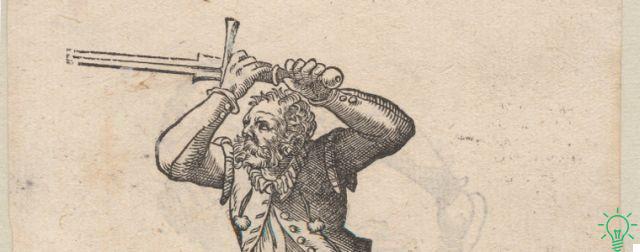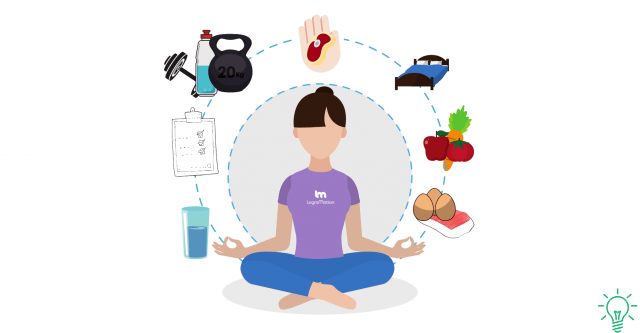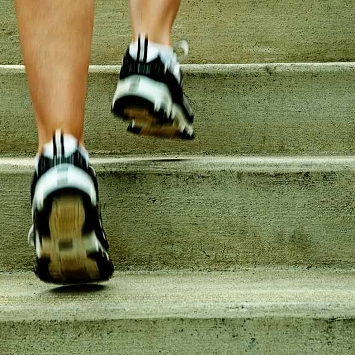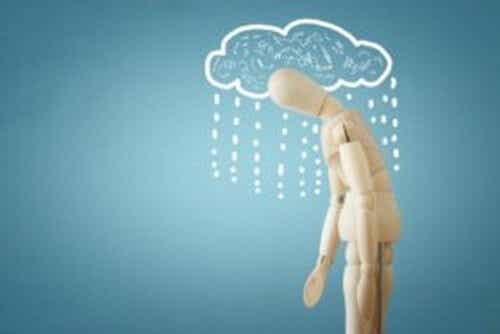Relaxation techniques are indicated for people with excessive psychophysiological activation. During the exercises, however, difficulties can be encountered that must be resolved in order not to affect their effectiveness.

Last update: 24 March, 2022
Breathing and relaxation exercises are considered the best allies against anxiety, depression and obsessive-compulsive disorders. But not only that, they are equally useful in the daily life of many people. The benefits are immense, but there are also obstacles during the implementation of muscle relaxation exercises, difficulties that hinder their execution.
Precisely because of this, many do not get the desired results; or to reduce psychophysiological activation. Below we will address some of the problems that can arise in performing Jacobson's progressive muscle relaxation exercises and Shultz's autogenic training.
What is progressive muscle relaxation?
Progressive muscle relaxation is a technique developed by Jacobson and which has its roots in oriental philosophies, meditation and yoga.
The main goal of this practice is the reduction of psychophysiological activation to achieve general relaxation. Considering the body as a whole, this technique argues that by relaxing the muscles, the body sends signals to the brain to induce a state of general relaxation.
Main objective: deactivation of the sympathetic system
The nervous system is divided into sympathetic and parasympathetic. The sympathetic system is linked to psychophysiological activation, while the parasympathetic to relaxation. These two systems cannot activate at the same time, as one cannot be tense and relaxed at the same time.
The aim of progressive muscle relaxation is, therefore, to deactivate the sympathetic system to activate the parasympathetic one. The most notable effects produced by muscle relaxation are the decrease in muscle tone and slowed breathing.
Muscle relaxation and constancy exercises
In order for progressive muscle relaxation to take effect, constant training is required (in order to achieve automation). It consists of exercises through which the muscles are tensed and stretched, one by one, for several seconds, following a chain of muscle groups. First the arms relax, then the face, neck, stomach and legs.
The ultimate goal is not relaxation through just practicing tension-relieving exercises, but rather, by feeling the tension in the muscles due to anxiety or nervousness, learn to automatically relax them through training.
In practice, however, problems may arise that hinder the learning of the technique, and that can lead the person to doubt its effectiveness until it is completely suspended.
Both during the session and in daily life, you have to relax in order to carry out daily activities and achieve your goals. Below we list the main difficulties that are most often encountered in these practices.
It is important to take them into account in order to correct them and don't break down. There are reactions of the body which, although they appear strange, if subjected to these relaxation exercises can normalize.
Interference when performing muscle relaxation exercises
Some of the most frequent difficulties:
- Difficulty concentrating on exercisesRelaxation can be perceived as a strange sensation by some, and it is not uncommon that in the beginning, being a low level of stimulation, it can be difficult to obtain it. It is advisable not to abandon it, as little by little what appears to be an '"artificial" state will become "natural".
- Movements: Moving while sitting or lying down is generally normal behavior. Whether they serve the person to make himself comfortable or to scratch, they have no influence on the final purpose. Conversely, if the person continues to move, it means that they are not relaxed.
- Disturbing thoughts are constant: although the ideal is to start with cognitive control rather than relaxation, this order is often not respected. To avoid these thoughts, calming sounds can be used to induce relaxation. It is equally useful for the therapist to accompany the exercise with his or her voice. Furthermore, the practice of mindfulness can prove to be very helpful in avoiding these thoughts.
Feeling ashamed while practicing
Here are some difficulties that the practice can produce in the form of subjective sensations:
- Fear of closing your eyes: some people do not want to close their eyes during relaxation, especially in group courses. But it also occurs in cases where you have a hard time being alone for a while. This is essentially related to the fear of losing control. We are not normally used to staying awake in strange situations due to the socialization process. However, closing your eyes is essential to avoid being distracted from the outside. Setting aside a few hours of the day in which not to be disturbed can free the person from the fear of not having control over who can enter.
- Reluctance to perform certain exercises: if the training is not performed at home, but in therapy, it is possible that the person feels ashamed in performing certain tension-relaxation exercises. This can be easily remedied by the therapist by performing the exercises together with the patient. It is especially recommended at the beginning and in the case of shy people that the exercises are performed away from prying eyes.
- Laughter and chatter: precisely because of the discomfort experienced by many in the face of silence, it can happen that the individual laughs during the exercises or talks loudly or with other people if the training is in a group or session. It is recommended to hold back laughter or words because they can interfere with the dynamics of relaxation and the results obtained up to that moment. If this happens during the session, the therapist will have to stop that behavior and, if it doesn't work, make the right observations objectively and without reinforcement.
Physical causes
- Nausea: Lying down training can sometimes cause nausea. This can easily be remedied by changing positions and maintaining a more upright posture.
- Spasms and tics: usually occur in the presence of a high degree of initial tension. They are a good sign, as it means that relaxation is working.
- Muscle cramps: cramps mainly affect the calves and feet. If they become problematic, it is advisable to reduce the seconds of tension and lengthen those of relaxation. It is also recommended not to relate relaxation to cramps, and if they become too annoying, it is advisable to walk for a few minutes before resuming the exercises. On the contrary, stopping them altogether can be counterproductive.
- Internal activation (excitement)Some muscles are involuntary and muscle relaxation affects only those we can control. However, it is important to keep in mind that these systems are interrelated and that internal relaxation is also achieved. It is therefore normal to feel internal tension even if the muscles are relaxed.
Normalization of the strangest sensations
Often these difficulties risk nullifying the effectiveness of the training. They can also be frightening if you experience unwanted effects of relaxation. Nothing happens if you fail to overcome a problem and continue to work on it.
As for the strangest sensations, keep in mind that they are completely normal. They will gradually disappear as the body gets used to the relaxation exercises. They should not in any way be a cause for discouragement or lead to think that something is wrong.
On no occasion, even if difficult, should you give up training. It is recommended to continue until muscle control and relaxation are achieved, almost at will.


























